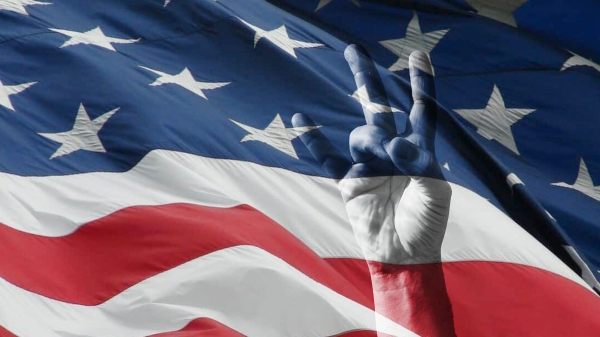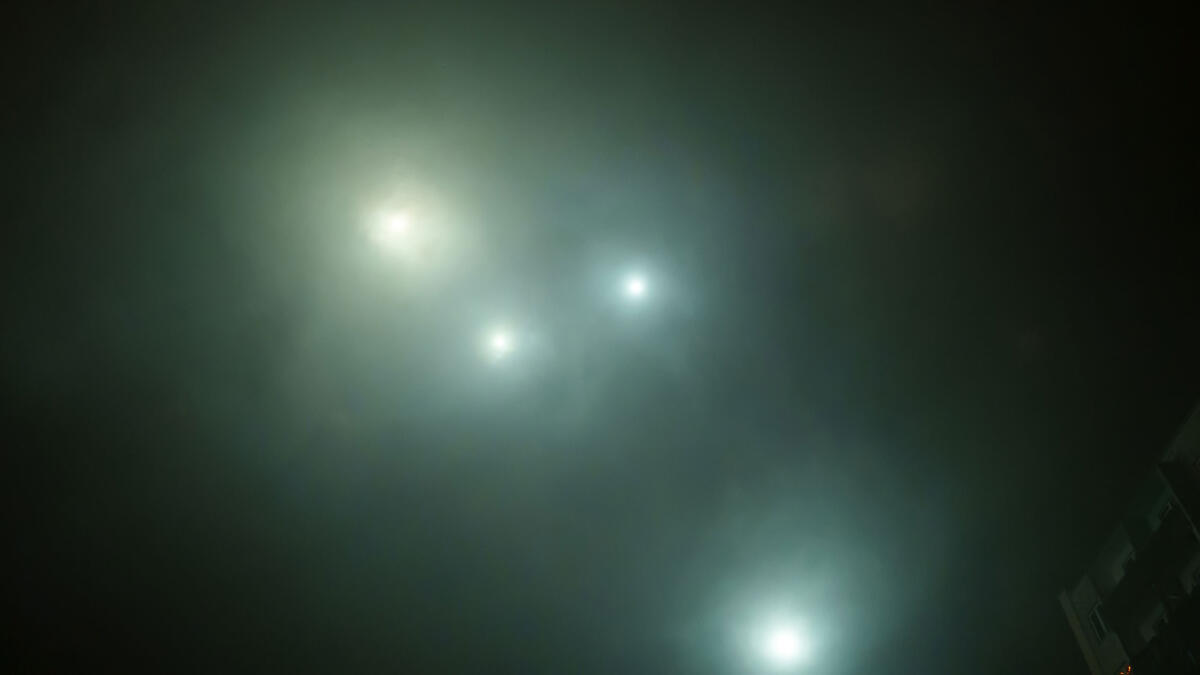Until a few years ago, UFOs were traditionally treated as something far-fetched and relegated to the fringes. Any talk of them was usually linked to questions about ancient aliens, abductions, or who made the pyramids and crop circles.
However, in the past few years, segments about UFOs have aired on primetime news and flying saucers have appeared in front-page stories published by The New York Times. So, what happened in the last few years to bring these kinds of stories back to mainstream national attention?
A recent panel held as part of the Future Security Forum co-hosted by Arizona State University and New America on Sept. 13 and 14 explored this topic.
“For a long time the feeling of the military between 1947 and roughly 1953 was this is a very tense post-war moment, the beginning of the Cold War. ... It seemed very possible that foreign adversaries like the Soviets had developed craft that could easily outmaneuver us and travel several times faster than the speed of sound, and so it was a very real concern that there were things in our airspace that we couldn’t account for,” said Gideon Lewis-Kraus, 2017 national fellow at New America and staff writer for The New Yorker.
“But the point was serious reports were coming in from credible people, people like military pilots, civilian pilots. There were hundreds of these (reports) coming into the Air Force every year. So, the feeling was something had to be done about the fact that all of these strange sightings were happening.”
Lewis-Kraus added that, on the other hand, the U.S. wanted to project a powerful image of itself and not acknowledge things that it didn’t understand — UFOs — were entering its airspace, causing American officials’ opinions on the matter to split.
“There was also the feeling that we could not show that we were ignorant of stuff going on in our airspace, we couldn’t show that there were repeated incursions into our airspace, potentially by adversaries that we couldn’t account for — and especially in the early moments of the Cold War, we never wanted to project that kind of weakness,” Lewis-Kraus said.
“So, there were two countervailing tendencies among officials. There was the feeling we should take weird things seriously because it’s the only way we’re going to learn there’s stuff going on that’s beyond our ken, and on the other hand, we need to prevent people from taking weird things too seriously or it’ll look like no one’s minding the store.”
These differing approaches on addressing UFO sightings ultimately culminated in congressional hearings in the 1960s and the publication of a report, "Scientific Study of Unidentified Flying Objects," which dismissed the phenomenon, despite the government still keeping track of UFO sightings unbeknownst to the general public.
“To some extent, the history of this time shows that UFO conspiracy theories aren’t totally wrong to believe that there was in fact a concerted effort to get people not to take this stuff seriously, and it worked. After about 1970, that’s when you start seeing the mainstream media making fun of these things — you see most official announcements making fun of these things,” Lewis-Kraus said. “But at the same time, behind the scenes, you still have people taking it seriously because the concerns about potential national security implications never went away. So, the decision was in public we still need to project strength, we need to show we know what’s going on and that we’re never left puzzled by flying enigmas.”
One possible reason that stories of UFO sightings are now appearing on mainstream outlets more frequently is because of increased interest among a new generation of officials.
“There’s no reason to believe that our high-ranking government officials, both elected and in the military, are prone to have more reasonable, rational beliefs than the rest of us,” Lewis-Kraus said. “The sort of cynical answer is well, lots of people are interested in UFOs, so this a matter of a few kind of ‘UFO nuts’ who managed to end up in positions of power where they could fund UFO studies.”
Another reason for the increase in dialogue around UFO sightings: the widespread adoption and deployment of drone technology.
“It’s no surprise that this has coincided with the early years of widespread drone deployment, and increasingly over the last couple years, there’s definitely some evidence that at least some of these mysterious UFO sightings over our carrier groups probably represented drone swarms,” Lewis-Kraus said. “And so then the balance that had set the taboo in motion began to shift, that all of the sudden it seemed less important for us to emphasize that we knew everything that was going on in the air and a little bit more important for us to say, ‘Look, if we’re hearing weird things from our pilots, we might need to concede our puzzlement in public in order to make sure that we are getting good information from the people who are on the front lines to tell us what’s going on.’”
But the government’s ambivalence about publicizing UFO sightings is unlikely to change anytime soon.
“There’s always this question of to what extent do you want to leave yourself open and vulnerable by saying that you don’t know what’s going on,” he said. “And I think that the UFO story is a great case study in why exactly we would admit uncertainty and ambivalence and why we would hide that uncertainty and ambivalence.”
More from the Future Security Forum
- Opening remarks
- Sen. Mark Kelly discusses Congress' role in national security
- Charting a future with COVID-19
The Future Security Forum is the premier annual event of the Future Security project — a research, education, and policy partnership between ASU and New America that develops new paradigms for understanding and addressing new and emerging global challenges. The forum brings together thought leaders from government, academia, the military and the media to reflect on the legacy of the United States’ “longest wars,” discuss the impact of the past two decades of U.S. policy, and chart national and international security trends.
Top photo courtesy of M-Production/iStock
More Law, journalism and politics

ASU Law to offer its JD part time and online, addressing critical legal shortages and public service
The Sandra Day O’Connor College of Law at Arizona State University, ranked 15th among the nation’s top public law schools, announced today a new part-time and fully online option for its juris doctor…

ASU launches nonpartisan Institute of Politics to inspire future public service leaders
Former Republican presidential nominee and Arizona native Barry Goldwater once wrote, "We have forgotten that a society progresses only to the extent that it produces leaders that are capable of…

Annual John P. Frank Memorial Lecture enters its 26th year
Dahlia Lithwick, an MSNBC analyst and senior legal correspondent at Slate, is the featured speaker at the School of Social Transformation’s 26th annual John P. Frank Memorial Lecture on…


